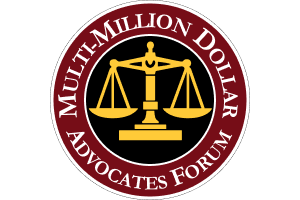Educating, Persuading, And Overcoming Prejudice Through Voir Dire
By: Ira H. Leesfield
Leesfield & Partners
2350 South Dixie Highway
Miami, Florida 33133
(305) 854-4900
I. Introduction
Jury selection sets the foundation for a successful trial result, and must be viewed as the beginning of your closing argument. According to Dr. Richard Crawford, “…the opening moments and hours of a trial tend to set in motion a persuasive momentum which is difficult to reverse. Thus, if you win the persuasion battle before your opening statement, you are well on your way toward a favorable verdict.”(1) One study reveals that eighty percent of jurors have reached a verdict by the end of voir dire(2). Whether this can truly be known is hard to say. What is certain, however, is that jurors develop their first impressions during voir dire: of you, your client, and the meritoriousness of your case.
II. Goals In Voir Dire
A. Developing Your Theme
Jurors want to hear a story. Remember, a trial is a dramatic event, perhaps the most important in the life of your client. Although there is no need to make jury venire members feel overly pressured, they need to be reminded of the importance of their civic responsibility. According to Russ M. Herman, “Not only must the jury be selected during voir dire, but you must introduce many elements, including the theme, or common thread of your case during the process.”(3) Take advantage of the opportunity to talk about the facts of your case, your theory of liability, and the loss your client has suffered. Examine your case for emotional, psychological, and intellectual themes that jurors may focus on.
B. Fact Finding
Numerous factors inhibit disclosure during voir dire. These include the formal courtroom setting, the brief examination period, and the natural tendency of the group setting to foster group conformity, or groupthought. Openness, warmth, and empathy will help to develop rapport and encourage opinions(4). Don’t appear to be sitting in judgment. Ask broad, non-leading, non-judgmental questions. Get members of the venire to participate by asking group questions that call for raising hands and nodding heads. Additional effective approaches include:
1. IDENTIFICATION/SIMILARITY: You want jurors who identify with your client. Develop qualities of your client that venire members are likely to strive for themselves. Some commentators view juror-client similarity as one of the most important dimensions in developing profiles of ideal and risky jurors.(5)
2. SELF-DISCLOSURE/DISCLOSURE RECIPROCITY: If you tell the venire members about yourself, they are likely to reveal more about themselves(6).
3. POSITIVE REENFORCEMENT: Encourage honesty by always thanking venire members for their candor.
4. MODELING: Develop venire role models for other venire members to emulate.
C. Recognize Unalterable Prejudice
This is your only opportunity to filter out potentially biased jurors. One effective method is to create a profile of an undesirable juror for your case. It is much easier to remove a prospective juror, either for cause or by use of a peremptory challenge, than to convert a juror with a disposition that is hostile to your case.
Listen to your intuition. Remember that “most juries are reluctant to expose their biases in the public setting of the courtroom”.(7) Many venire members may not even realize that they hold biases(8). In a New Jersey survey, 71 percent admitted prejudice in a pretrial survey, but only 15 percent admitted prejudice during voir dire.(9) Consider how individual venire members will react to the specific facts of your case. You will have to be very tactful. Make the venire members feel very relaxed. To get venire members to reveal prejudice, start slowly, reenforcing candor and thanking them for their honesty. Ask if they have read, heard, or seen anything about proposed changes in our judicial system. You do not want a tort reformer sitting on your jury(10). Avoid words like “bias” and “prejudice”.
D. Neutralize Prejudice (Rehabilitation)
Some venire members can be reeducated or rehabilitated. Remind them that if you were not allowed or even encouraged to litigate against the defendant(s), the presiding judge would not have allowed your case to come to court. Have juror pledge that he or she will keep an open mind, deciding the case based on the facts presented in court and not on personal experience. Don’t argue with venire members; always remember that “your credibility in the eyes of the other jurors will be diminished if you cannot effectively handle a difficult juror.”(11) Venire members must be told what a good jury is; constantly emphasize the importance of their role. Learn to adjust your case to the venire.
E. Encourage Favorable Bias
“Voir dire” means “to speak the truth”. The object of voir dire to create a fair and impartial jury. Your job as an advocate is to ensure the seating of a jury that is most inclined to view your client’s case favorably; you can be certain your opposing counsel will be attempting to do the same. It is only through this dialectic that a “fair and impartial” jury can be synthesized. Create a profile of the ideal juror. Ask venire members to make a commitment to be fair and impartial, and to judge your client’s case on the facts as presented.
F. Persuasion (Educate and Condition The Jury)
Focus on personal style and public grace, with an eye toward “…keep[ing] in mind those factors which are unique about you and your experience as an advocate.”(12). Venire members will be swayed by the effectiveness of your delivery, a function of pace, emphasis, non-verbal communication, eye contact, sincerity, and friendliness. According to Urquhart, “The more they relate to you as an individual, the harder they will try to understand your argument and the more likely they will agree with your conclusion. First be a person, then a lawyer.”(13).
Show that you are well prepared. Learn about local attitudes. Always stand and face the venire members; assure them that you have faith in their ability. Eliminate mannerisms. Dress conservatively. Consider the use of visual aids. Speak simply, informally, and conversationally, use of humor is always a plus. Show that you are confident, both in yourself and the strength of the evidence. Set up your opening statement. Show concern by defining terms that members of the venire may not understand, but avoid seeming arrogant or patronizing. Explain to them what they can expect at each stage of the trial. Remember, this is an opportunity to condition the jury to your way of thinking. Educate the venire members with your interpretation of legal principles and procedures. According to one study, “…[the] tendency [of jurors] to draw pragmatic implications from implied suggestions is a powerful form of persuasion. Listeners tend to encode the inference as a fact and later, when asked, often mistakenly report they heard evidence in support of their inference.”(14).
G. Discuss Special Topics
If facts unfavorable to your case are likely to come out at trial, deal with them first during voir dire. Test venire members reactions to the most pressing issues in your case. If your case includes a controversial theory of liability, such as a consortium claim, it is important to discuss this with venire members before selecting a jury.
H. Subtle Tactics
Always refer to client by name and opposition as the defendant or insurer. Refer to opposing counsel by firm name.(15)
III. Caveats
A. Be Attentive (Listen)
Analyze messages that potential jurors send, look for clues that reflect attitudinal and personality traits. Focus on what they are saying and be attentive. Wait for their answers. Notice verbal and nonverbal reactions to both you and your client(16). Develop rapport by being empathetic and receptive. Remember, you are being scrutinized as well.
B. Individualize Your Attention
Don’t ask everyone the same questions, it damages your credibility. Talk with prospective jurors, referring to them by name, don’t just record information. Don’t ask embarrassing questions. Show that you are sensitive to each juror’s desire for privacy and that you will respect and honor those concerns during voir dire. Create a psychologically receptive atmosphere.
C. Prepare Client
Your client should face the venire members, concentrating on eye contact, sincerity, and friendliness, perhaps nodding in agreement when venire members describe interests and experiences. Negative impressions are difficult to overcome because people tend to ignore information that contradicts their first impression(17).
D. Be Attentive To Your Client
Display concern for your client. Jurors will be quick to recognize rapport. Use your clients name, never say “my client”. Ask your client his or her impressions of jurors. Remember, you are a team.
E. Carefully Characterize Your Client
According to Crawford, “There is no disputing the psychological reality that juror’s perceptions of the litigants often override substantive evidence and logical arguments, and produce the final verdict.”(18) As such, present your client as morally and socially beyond reproach. Humanize your client, let the venire members know that he or she will tell the truth. Always introduce your client to the prospective jurors. You don’t want jurors to see your client as wealthy, or otherwise not in need of judicial relief. According to one study, “The recovery rate of professional people, as plaintiffs, is 25 percent below the average recovery rate, and they receive 17 percent less money in damages.”(19) Consider special attributes and qualities of your client and use them to your advantage. For example, “In one study physically attractive plaintiffs in nondisfiguring cases and higher recovery rates and were awarded more in damages than unattractive plaintiffs.”(20)
F. Avoid Negative Spiraling
If you detect dominant negativity in the air, consider taking a break. This trend can be turned around by using favorable jurors to educate other members of the venire. Establish a strong and powerful relationship with the jury, encouraging group cohesiveness and friendly interaction.
G. Study The Judge
Make sure to note the reactions of the judge and his or her clerk. This may be helpful in planning to remove a venire member for cause and in otherwise further developing the presentation of your case.
H. Study Your Opposing Counsel
Through careful observation, you may avoid wasting peremptory challenges likely to be exercised by opposing counsel. Furthermore, you may be enlightened to other areas of your case that opposing counsel is not prepared to deal with effectively.
I. Bring Co-Counsel
It always helps to have additional eyes and ears, thus reducing your burden. Another perspective can also shed added insight into the reactions of all participants in the jury selection process. You may want to consider hiring a jury consultant for additional help(21).
IV. Pre-Trial Preparation
A. In General
Always learn the local rules of the court where you are trying a case. Because judges are given wide discretion in how they conduct the jury selection process, it is important that you make sure your judge is fair in his or her procedure for making peremptory challenges. You may want to motion the court to alter this process for your case. It may also be helpful to read the local news or watch the local television news. Media publicity about various issues may effect the venire members’ outlook toward your case. Also consider the impact of insurance advertising and campaigns in the area your case is being tried.
B. Questionnaires
These may be helpful in developing crucial background information. They also allow time for pursuing more personal and in depth lines of questioning.
C. Investigation
If published early, carefully examine the list of potential jurors. Research public documents for political registration and property holding information. You may also want to investigate the number and model of cars owned venire members at the department of motor vehicles, and/or visually inspect homes and neighborhoods (focusing on automobile bumper stickers, political and religious symbols, upkeep of the property, etc.). In addition, you may choose to interview people with knowledge about individuals in the venire.
V. Types of Jurors
A. Jurors To Avoid
Avoid tort reformers, small business owners, health care providers, day care providers, and executives (all who are potential liability insurance policy holders). The more disciplined jurors are with respect to money management, the more reluctant they will be to award substantial monetary damages to the plaintiff. Be wary when jury won’t look you or your client in the eye.(22)
If there is a seemingly aggressive leader that you are not fully comfortable with, strike him. This type of individual can often be the most dangerous.(23)
When making a challenge for cause, be confident. Make certain to show the judge that the target individual would not follow the law. Use your preemptory challenges very cautiously. Make your decisions while looking at the jury venire; it’s too easy to disassociate strong intuitive feeling once the venire members have left the room.(24)
B. What To Look For
Look for sympathetic jurors, those with something in common with your client. Level of compassion is key. Numerous demographic, sociological, and socio-economic studies exist that may provide useful generalizations. But you must remember, generalizations are not always applicable to individual venire members. It is only when matched with intuition that confident peremptory challenges can be made. According to Crawford, “…when a prospective juror consistently sends highly negative nonverbal messages to you and your team, you should probably exercise a peremptory challenge even if that person looks very good on paper and fits your jury profile well. Conversely, when a citizen seems pleasant and your instincts tell you this person is responding favorably, you should probably exercise a peremptory challenge when that person looks very bad on paper and is highly contrary to your jury profile.”(25)
VI. Conclusion
There is nothing insurmountable about finding a fair jury. Though jury selection has been classified as either art, science, or a guessing game(26), it is in fact a function of all three. By following the suggestions set forth above, in combination with your own unique style and flare, any jury can be turned around if properly approached on the issues.
1. Crawford, “Developing a sound approach to voir dire”, Trial Diplomacy Journal, 12:1 24 Spring 1989 at 25.
2. Jones, “Voir Dire and Jury Selection”, Trial, September 1986 at 60.
3. Herman, “Jury Selection in Civil Litigation”, Trial, January 1989 at 71.
4. According to Crawford, “In a sense, it is misleading to single out specific ‘techniques’ for establishing rapport, since this is essentially not a mechanical task. Successful advocates immerse themselves in the jury selection process with such genuineness and concentration that they actually join the prospective juror in a major social and legal endeavor. Such lawyers are not hovering over the jurors trying to get something so much as they are genuinely becoming part of the process.” Crawford, at 34,35.
5. Jones, supra at 64.
6. Frederick, “Effective Voir Dire”, Trial, August 1988 at 66.
7. Perlman, “The Key to Trial Psychology: The Human Touch”, Trial, September 1987 at 92.
8. See Vinson, “Excerpts From National Institute on Litigating ‘Rule of Reason’ Cases: Jury Psychology and Antitrust Trial Strategy”, 55 Antitrust L.J. 591, 594 (1986).
9. Andrews, “Mind Control in the Courtroom”, Psychology Today, March 1982 at 70.
10. See Blue and Boudreaux, “The ‘Liability Crisis’ and Voir Dire”, Trial, February 1987 at 59, and McAllaster, “Tips on Voir Dire”, Trial, April 1988 at 95.
11. Frederick, at 69.
12. Crawford, at 24.
13. Urquhart, “Voir Dire”, Trial, November 1987 at 106.
14. Swann, Guiliano & Wegner, “Where the Leading Questions Can Lead: The Power of Conjecture in Social Interaction”, 42 Journal of Personality and Social Psychology, 1980 at 1025 (taken from Jones, at 66).
15. Herman, at 76.
16. Isaacs, “Jury Selection: Discovering the Hidden Agenda”, 60 Florida Bar Journal, December 1986 at 21-22.
17. Linz and Penrod, “Increasing Attorney Persuasiveness in the Courtroom”, 8 Law and Psychology Review 11, 1984 (taken from Jones, at 62).
18. Crawford, at 35.
19. 5 Jury Verdict Research, Inc. Personal Injury Valuation Handbook, 1965 (taken from Jones, at 64).
20. Stephen and Tully, “The Influence of Physical Attractiveness of a Plaintiff on the Decisions of Simulated Jurors, paper presented at a meeting of the North Carolina Sociological Association, Cincinnati, Ohio 1973 (taken from Jones, supra note 19).
21. See Pierce, “Selecting the Perfect Jury: Use of Jury Consultants in Voir Dire”, Law and Psychology Review, 14:157 (1990).
22. See Herman, supra note 22.
23. Sanders, “The Voir Dire in a Civil Case”, UMKC L.R., 57:4 1989 at 774.
24. Id.
25. Crawford, at 36.
26. Pavalon, “Jury Selection Theories, Art? Science? Guessing Game?”, Trial, June 1987 at 26.







